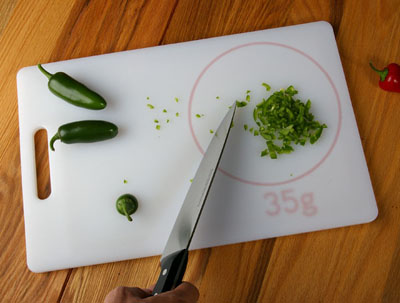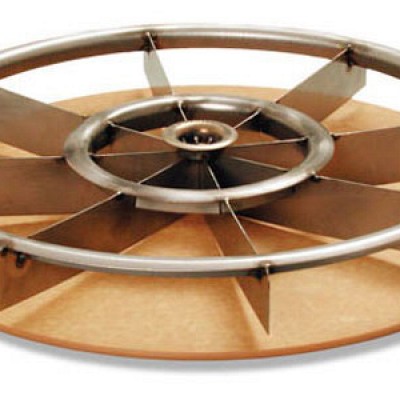Restaurants or food service establishments are fast-paced environments where potential hazards are only a stray plate or forgotten stove away. Staff in commercial kitchens use hazardous equipment like commercial ranges, grills, or deep fryers that can cause severe burns. As in most businesses, some employees in the hospitality industry work part-time or come with limited experience, increasing the chance of life-threatening injuries. In this article, we discuss the importance of safety and how to prevent workplace injuries by training the staff, using protective gear, and following strict guidelines or procedures.
Why is safety so important in the commercial kitchen environment?
Safety should be assured primarily by commercial kitchen equipment. Due to COVID-19, many foodservice establishments have reduced their workforce drastically. This has put tremendous pressure on the current kitchen workforce, which has led to an uptick in workplace injuries. Your staff may be more prone to cuts from knives, burns from contact, slips and falls, and mental health issues.
Cuts from knives
Most kitchen staff in restaurants, cafes, diners, and institutions suffer from knife-related injuries. Cuts from knives occur while preparing vegetables, meat, or chicken for various dishes. In large-scale food service establishments, the staff use large and sharp blades to cut, dice, and chop food items. Many chefs suffer deep cuts from knives that can lead to further health issues. It is essential to use protective equipment to prevent knife cuts.
Dangerous machinery and equipment
In the food and hospitality business, the staff handles dangerous equipment every day. They handle large hot pots, gas or commercial electric ranges, or grills that can lead to potentially life-threatening injuries if mishandled. Prevent injuries by following the correct procedures of handling and carrying equipment.
Burns from contact with hot surfaces and harmful substances
Freshly cooked food is mostly hot and can lead to severe burns. In restaurants and foodservice establishments, employees rush across the kitchen and service area with hot liquids and food, which can easily spill and cause burns. In commercial kitchens, grease, hot oil, and chemicals can also splash and cause eye injuries. Proper precautionary or safety equipment is necessary for commercial foodservice establishments to prevent severe burns or eye injuries.
Slips and falls
During rush hour, a commercial kitchen can feel and look like a battlefield. Servers, cooks, and cleaning staff rush across the establishment to deliver food quickly to patrons. During these peak hours, the chances of hazardous injuries also increase exponentially. Spills from gravy or liquids can be a potential risk for both customers and employees. Additionally, people can slip and fall due to wet floors. Investing in slip-resistant floor tiles and grease-resistant floor mats can reduce potential slips and falls.
Mental health issues
Most commercial food service workers work for long hours and without any breaks. Their responsibilities can add to mental health issues. Fortunately, mental health is now a greater priority for the foodservice industry. Business owners across the world recognize the importance of mental health in the food business, and kitchen workers are more open to therapy, medication, and breaks from their hectic work schedules.
Tips for avoiding safety hazards in the commercial kitchen environment
It is important to assess potential hazards in the commercial kitchen environment. Working towards making the workplace safer can help you safeguard your business in the long run. Here are some tips to avoid safety hazards in the commercial kitchen environment:
Identifying potential hazards in the workplace
Commercial food establishments are high-risk areas where periodic inspections are necessary. With periodic inspections, you can eliminate potential threats and injuries. You can conduct weekly checks or daily checks to prevent hazards. Identify potential chemical and occupational hazards during these checks to avoid large-scale damage.
Conducting regular training and seminars
Conducting essential training for your staff can prevent potential workplace hazards. You can train your newly enrolled workforce when they are onboarded, when new equipment is introduced, and whenever processes are modified or changed. A training plan can include:
- Fire prevention plans
- Safe work practices
- The importance of kitchen safety gear
- Information exchange on potential chemical hazards
- First aid training
- Emergency evacuation procedures
Provide workers with protective clothing and equipment
Foodservice establishments are highly hazardous and risk-prone areas. Without personal protective equipment, even the best-trained employee can be at risk. Chefs and cooks should always wear capes and safety gear to prevent accidental burn injuries. Opt for a high-quality uniform and shoes for your staff. Slip-resistant shoes can prevent accidental slips, trips, and falls.
Operate restaurant equipment safely
Commercial food establishments have a wide array of equipment that needs constant human intervention. Teach and train your employees to operate kitchen equipment correctly. This will increase efficiency and also prevent potential hazards.
Prevent common restaurant injuries
Restaurant or workplace injuries can be prevented if all stakeholders are aware of their responsibilities. The management should communicate all health and safety policies. Employees are responsible for adhering to strict safety guidelines and assisting in maintaining a safe work environment.
Conclusion
Health and safety should be the utmost priority for commercial foodservice establishments. Identify potential hazards, conduct regular training sessions, and provide safety clothing to your staff. Additionally, maintaining safety procedures and taking necessary precautions can prevent possible life-threatening injuries.
Photo by Pavel Danilyuk from Pexels






































